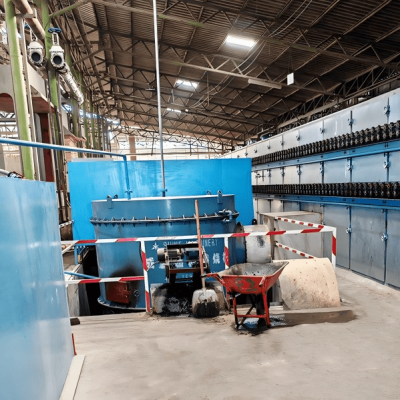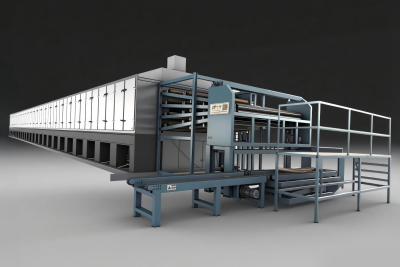Why Veneer Needs to Rest Before Drying
The Critical Wait: Why Veneer Needs to Rest Before Drying
In the high-speed world of wood processing, efficiency is king. Every minute saved on the production line translates to increased output and profitability. It’s natural to want to move freshly peeled veneer from the lathe directly into the dryer to keep the line moving. However, this seemingly efficient shortcut is a classic case of being "penny wise and pound foolish." The most crucial, yet often overlooked, step for achieving high-quality, stable veneer is not rushing, but waiting. This process, known as conditioning or aging, is the unsung hero of veneer production.
At first glance, a freshly spun sheet of veneer appears ready for the next step. But beneath the surface, it’s in a state of turmoil. The rotary cutting process exerts tremendous shear forces on the wood, violently separating the layers. This traumatic birth leaves the veneer riddled with powerful internal stresses that are wildly unbalanced. Imagine stretching a rubber band to its limit and holding it there; that’s the state of the wood fibers immediately after peeling.
Subjecting this stressed material to the intense heat of a dryer is a recipe for disaster. The results are predictably problematic and costly. The most common issues include severe cracking and warping. As the dryer’s heat rapidly evaporates surface moisture, the outer fibers begin to contract. Meanwhile, the wet, swollen inner fibers, still locked in by the internal stress, resist this contraction. This unequal battle leads to splits, checks, and a warped, unusable sheet of veneer.
Furthermore, immediate drying leads to inconsistent moisture content. The stress acts as a barrier, preventing moisture from migrating evenly from the core to the surface. You can end up with a board that is brittle and over-dried on the outside yet still unacceptably damp on the inside. This "case-hardening" effect renders the veneer poor for further processing. Not only is the quality inferior, but the process is also inefficient. Drying this stressed wood requires more energy, higher temperatures, and longer cycles, driving up operational costs.
This is where the simple yet powerful step of conditioning comes in. By allowing the veneer to rest in a controlled, ventilated stack for a period—typically between 2 to 8 hours—we permit nature to do its work. The primary goal is stress relief. This resting period gives the wood’s cellular structure time to relax and reorganize, releasing the pent-up energies from peeling. A relaxed veneer is a stable veneer, one that will respond predictably and uniformly to the drying process.
The benefits extend beyond stress relief. Conditioning also allows for an initial equalization of moisture. The moisture content across a freshly peeled sheet is not uniform. During aging, moisture slowly migrates, creating a more consistent starting point for the dryer. Additionally, some free water on the surface evaporates naturally, lessening the load on the dryer and saving energy, as removing free water is far less energy-intensive than removing bound water.
To be effective, conditioning must be done correctly. Veneer sheets should be stacked in an open-cross pattern (like a log cabin) with stickers to allow maximum air circulation around each sheet. This prevents moisture traps and inhibits mold growth. The stack should be placed in a shaded, well-ventilated area, protected from the elements. The optimal duration depends on species, thickness, and ambient temperature and humidity, requiring careful observation and process fine-tuning.
At Shine Machinery, we understand that quality drying doesn't start with the dryer; it starts at the lathe. While our advanced drying systems are engineered for precision and efficiency, we always advise clients that the best results come from a holistic process that respects the material science of wood. Integrating a proper conditioning stage is the most effective way to enhance dryer performance, reduce energy consumption, and, most importantly, produce flawless veneer that commands a premium in the market. Sometimes, the most productive action is a purposeful pause.







